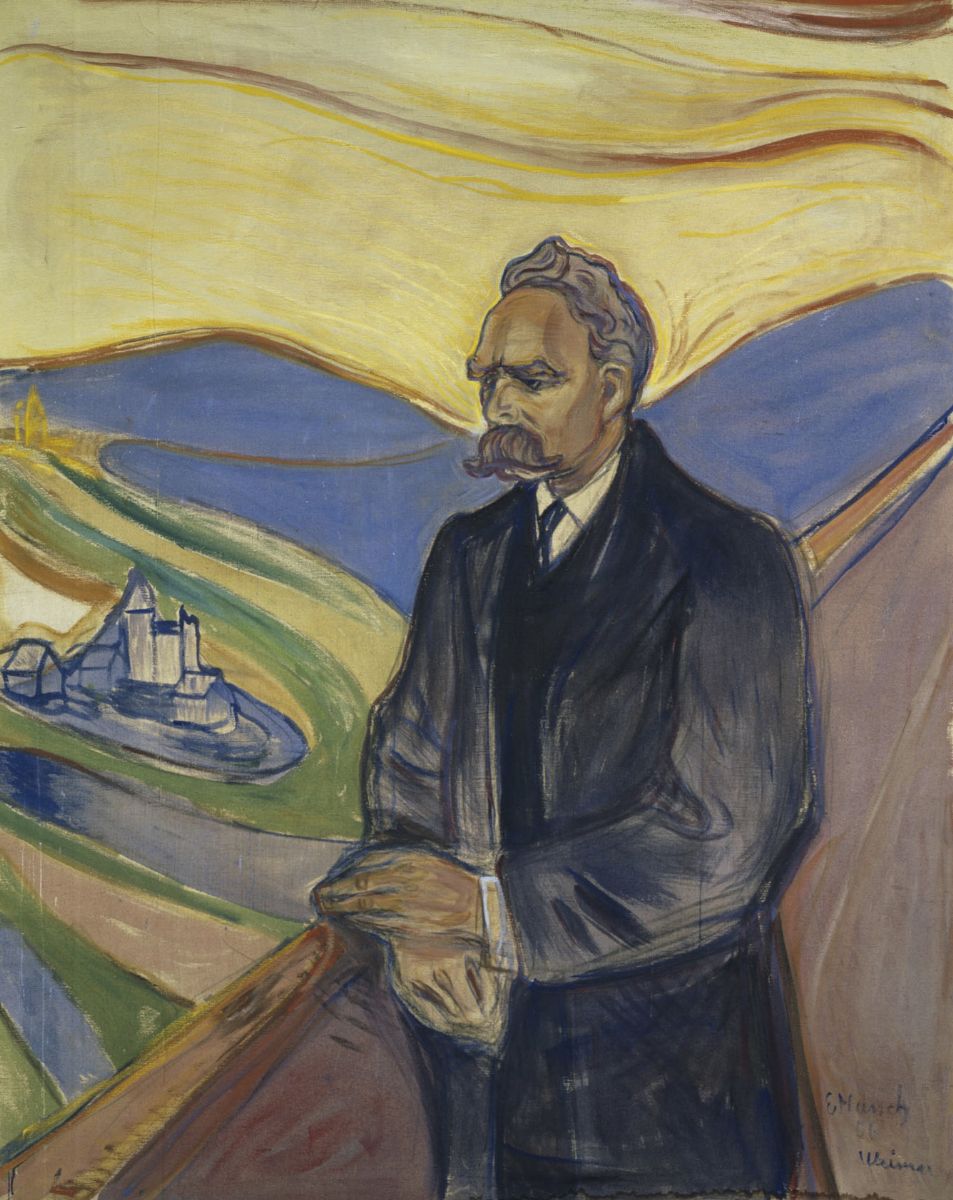Robert Musil’s novel, The Man Without Qualities, is the perhaps the foremost German-language contribution to the exceedingly long and perhaps overly cerebral modernist genre, otherwise the domain of Ulysses and In Search of Lost Time. Why the German-speakers and their works have never been as popular as those of the English and French is a complicated and thorny subject. Musil’s magnum opus, at least, is hurt by the fact that its author departed this life before he had completed it – though he managed over a thousand pages, so perhaps we shouldn’t complain. The Man Without Qualities is, according to critical wisdom, the best thing Musil wrote. However, lacking unlimited time, I decided to try a few of Musil’s other works, to get a feel for him. My first attempt is Posthumous Papers of a Living Author, a collection of creative non-fiction and short stories. Below are my thoughts.

Of Flies and Worms
The first thing I noticed about Posthumous Papers of a Living Author is that it is a book populated with animals. I don’t know if Musil was a vegetarian, but I had the impression as I read that he had great sympathy for animals, regardless of whether he ate them. I think in them he saw a reflection of our own human selves in the modern era. Fears about mechanised slaughter and technology-driven control, and about the destruction of individuals under the treads of science and social pressures, he expresses through his non-fiction, in particular the pieces “Flypaper” and “Fishermen on the Baltic”.
“Flypaper”
“Flypaper”, the first of these little pieces, describes the killing of flies. We begin with a basic scientific and factual description of the paper in question – “Tangle-foot flypaper is approximately fourteen inches long and eight inches wide; it is coated with a yellow poison paste and comes from Canada”. But this beginning is deceptive, for Musil starts to work in his argument immediately after it. The structure of the piece is simple, describing in only two or three pages the process by which flies are killed by flypaper: they land, they try to fly, and then at last they lose their strength and die. Such a description would hardly affect us if Musil had left it like that. But instead, he uses language to draw us into the fly’s struggle, and make us aware of its brutal nature. And in this verbal magic, not even the form can remain neutral.
Part of this comes through metaphors and similes. Although “Flypaper” is short, it is packed with images. And these images are invariably, consciously, human. Entangled flies are like “the mountain climber”, like “the man lost in the snow”, like “the hunted man” – all this within a single, long, sentence. Musil’s use of multiple images within a single sentence makes the particularly human nature of his images hard to avoid noticing. Then there is his use of “we”, not often but just often enough for us to know that the fly’s struggle is much like our own. Musil’s language is also startlingly colloquial at times, like when the flies “take a breather and try again”. Where technical, scientific language would push us away from the fly, Musil’s particularly casual style does the opposite.

And so the fly dies, and by this point we are almost on its side. We have been made aware of its human qualities. And the attention that Musil gives to it, showing in detail how it tries to escape only to lose its strength and collapse, also alters our view of the fly’s death. By breaking down “flies land and die” into its component parts, by defamiliarizing the process of death, Musil turns the flypaper into something abhorrent, and the fly’s struggle into tragedy. When we learn, in the final sentences, that though the fly stops moving, nevertheless there is “some tiny wiggling organ that still lives a long time”, that “it opens and closes, you can’t describe it without a magnifying glass, it looks like a miniscule human eye that ceaselessly opens and shuts” – when we learn all this it’s hard not to feel horror and shock.
“Fishermen on the Baltic”
What “Flypaper” does for flies, the third piece in Posthumous Papers of a Living Author, “Fishermen on the Baltic”, does for worms. But here Musil alters the approach. In “Fishermen on the Baltic” we focus on fishermen preparing worms for fishing. At first they are “an obscure, mouldy, enticing ugliness in the clean white sand”, but then the men take them, cut them into pieces, and put them in their equipment chests. It is “a very tidy operation”, one where Musil uses the passive voice to further distance the fishermen from their slaughter.
But, as Musil himself hints at the end of the piece, “you have to pay close attention”. (It’s hard not to read this as a command for the reader concerning the text, even as it’s ostensibly about the worm-preparation). Take the placing of worms on hooks by the men, “as carefully as nurses to make sure that each hook gets a worm”. Nurses do not aim to kill people. The image, while fitting on one level – nurses and fishermen need steady hands – is repulsive once you go beneath the surface.
“Fishermen on the Baltic” is even shorter than “Flypaper”, but there is still a lot going on here. We should admire the skill of the fishermen’s craft, but Musil wants us to think also about its cost. The worms are killed mechanically while the fishermen banter. Perhaps there is something of an allegory for fascism here. Posthumous Papers of a Living Author was published in 1936, but I haven’t been able to work out when this particular piece was written. Nonetheless, we have a sense of the worms’ ugliness, a sense that they are only useful for us as objects for fishing and not as living beings in themselves. Perhaps it’s not too much of a stretch?
Cultural and Other Declines
Posthumous Papers of a Living Author is not only concerned with modernity’s crushing effect on the individual – it’s also a record of various sorts of decline that Musil saw taking place around him. Partially, this decline is linguistic. Musil is concerned with the way that language, through advertising and overuse, is losing its meaning. In a piece like “It’s Lovely Here”, Musil takes aim at the clichés of postcards. In “Monuments”, Musil connects the fate of monuments in Europe – ignored, or at best used for directions – with the broader cultural decline. If only they used the new tricks of advertising – “Goethe’s Faust is the best!” would be a great inscription for a statue to the German instead of something so boring as a name and date.
Often, language is simply unable to convey its idea. In “Boardinghouse Nevermore”, Musil notes that words like “harmony” are useless at showing what to the naked eye is obvious. This points to a deeper problem: that people assume, with the encroachment of scientific language into everyday speech, that everything can be explained and translated. Such a view ultimately takes the “magic” out of life. Musil, unlike most writers, had actually had a scientific and technical education – nonetheless he understood the dangers of adopting an overly-scientific worldview. In “Can a Horse Laugh?” this is treated with humour. At first an “acclaimed psychologist” is quoted – “…for animals don’t know how to laugh or smile”. Musil, however, spends the rest of the essay arguing against this through the example of a stable boy and his horse. Personal experience defies the scientist. But we shouldn’t blame the horse for proving him wrong.
Snobbery and State of Consciousness
Against this sense of linguistic decline there are a few attempts here to fight back. In addition to “Flypaper”, there are other stories that make us revaluate the world through taking us into different consciousnesses. “Maidens and Heroes” amusingly puts us inside the head of a canine, while “Clearhearing” shows us the world through the eyes and ears of a convalescent. “Binoculars” makes us think about the way we look at things by showing us, through careful descriptions, a zoomed-in version of the world. Musil’s inventiveness is at times really quite impressive.
However, while Musil’s linguistic ventures can be interesting, the cultural criticism is often less so. The advertising criticism of “Monuments” is just about okay, but in something like the “Paintspreader”, talking about talentless “genre painters”, Musil comes across as simply a snob. In “Surrounded by Poets and Thinkers” he asks the question of why writers don’t write long books anymore, and comes to the conclusion that it’s because the reading public are idiots. There is more to the essay than this – it ultimately is about our loss of belief in experts, and the way that as a result we know longer trust each other. In the end, Musil writes, someone whose views are completely awful will be able to gain popularity simply because everyone has an equally poor claim on respect. It’s a timely point, but one overshadowed by the condescending tone. Musil is no egalitarian champion himself.

Conclusions
I only spoke about a few of the things from Posthumous Papers of a Living Author in this post in part because I ended up having more to say about them than I’d expected – indeed, I had to cut and compress whole themes from my plan. However, another reason I did not speak about many other of the pieces is because, quite frankly, they didn’t leave a great impression on me. Posthumous Papers of a Living Author was, in its author’s words, a “little stop-gap book”, and as a result the quality is very uneven. At times, Musil’s language is fantastic and inventive, while at others it falls victim to modernist overindulgence.
I also think that the ideas of Posthumous Papers of a Living Author are not all equally interesting either. Perhaps I am just jaded, having read more than my fair share of modernist literature, but a lot of Musil’s moaning about cultural and linguistic decline and related matters, however relevant his complaints remain in our own day, just strikes me as picking on easy targets. The fact remains that identifying problems is the first step towards solving them – not the only one. I got the impression that Musil can’t quite pick a side between being art-for-art’s-sake or being engaged with the world, and it hurts these pieces at times.
Overall, Posthumous Papers of a Living Author suffers from much the same problems that Alfred Döblin’s Murder of a Buttercup did – it’s sometimes intellectually satisfying, but it forgets to touch the heart. At its best, Musil seems a worthy precursor to Borges. But unfortunately that isn’t the case often enough. I can only hope that his other works will be more consistent.



